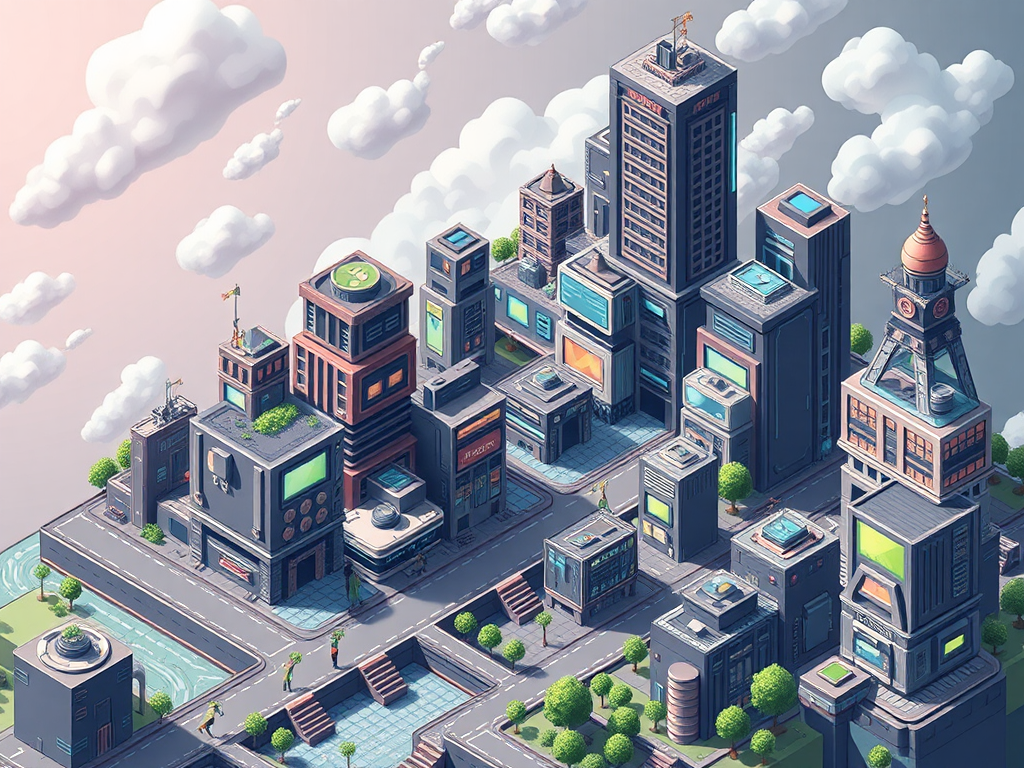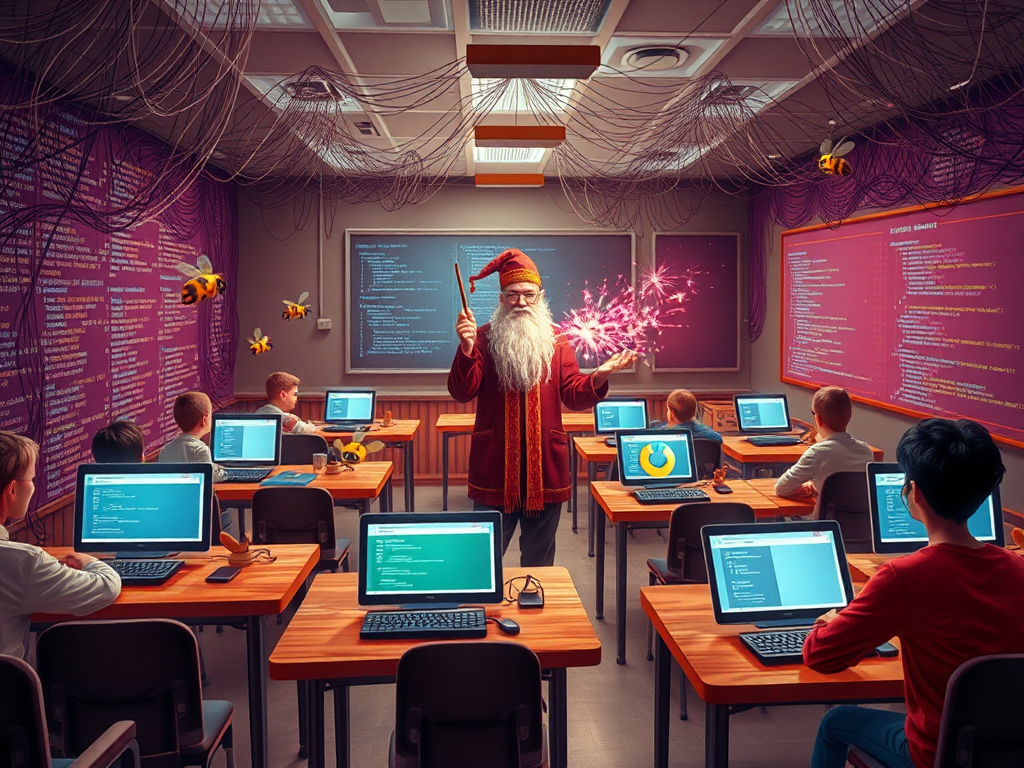Origins
I still remember when I first started learning Python GUI development, feeling confused and lost. With so many development frameworks available, how to choose? How to create an interface that is both beautiful and practical? After years of practice and exploration, I finally found some insights. Today I'd like to share my experience and thoughts on my Python GUI development journey.
Framework Selection
When it comes to Python GUI development, choosing a framework is probably the most headache-inducing part. Tkinter, PyQt, Kivy, wxPython... each framework has its own characteristics, so which one should you choose?
My suggestion is: if you're a beginner, start with Tkinter. Why? First, Tkinter is Python's standard library, so you don't need to install any additional dependencies. Second, it has a relatively gentle learning curve, suitable for beginners. I still remember how excited I was when I first wrote a "Hello World" program with Tkinter:
import tkinter as tk
window = tk.Tk()
window.title("My First GUI Program")
label = tk.Label(window, text="Hello, World!")
label.pack()
window.mainloop()
If you want to create more complex applications, I would recommend PyQt. It has a very rich component library, beautiful interfaces, and excellent cross-platform support. However, note that PyQt has a relatively high learning cost, and you'll need to invest more time to master it.
Layout
Speaking of interface layout, this is quite a subject. I've seen too many beginners' works: interfaces all crooked, controls of inconsistent sizes, just uncomfortable to look at. Actually, there are several key points to consider for good layout.
First is the use of grid layout. It's like an invisible table where you can precisely control the position of each control. For example:
import tkinter as tk
window = tk.Tk()
window.title("Grid Layout Example")
username_label = tk.Label(window, text="Username:")
username_label.grid(row=0, column=0, padx=5, pady=5)
username_entry = tk.Entry(window)
username_entry.grid(row=0, column=1, padx=5, pady=5)
password_label = tk.Label(window, text="Password:")
password_label.grid(row=1, column=0, padx=5, pady=5)
password_entry = tk.Entry(window, show="*")
password_entry.grid(row=1, column=1, padx=5, pady=5)
window.mainloop()
This example shows how to create a simple login interface using grid layout. By setting row and column parameters, we can precisely control the position of each control. The padx and pady parameters are used to set spacing between controls, making the interface look more harmonious.
Interaction
Once the interface is done, next comes handling user interaction. This part might be the most challenging, as you need to consider various user operation scenarios.
My experience is: always think from the user's perspective. For instance, what do users expect to see when they click a button? How should you notify them if an operation fails? Here's a simple example:
import tkinter as tk
from tkinter import messagebox
class Calculator:
def __init__(self):
self.window = tk.Tk()
self.window.title("Simple Calculator")
# Create input boxes
self.num1 = tk.Entry(self.window)
self.num1.grid(row=0, column=0, padx=5, pady=5)
self.num2 = tk.Entry(self.window)
self.num2.grid(row=0, column=1, padx=5, pady=5)
# Create calculation button
self.calc_button = tk.Button(self.window, text="Add", command=self.calculate)
self.calc_button.grid(row=1, column=0, columnspan=2, pady=5)
# Create result label
self.result_label = tk.Label(self.window, text="Result: ")
self.result_label.grid(row=2, column=0, columnspan=2, pady=5)
def calculate(self):
try:
num1 = float(self.num1.get())
num2 = float(self.num2.get())
result = num1 + num2
self.result_label.config(text=f"Result: {result}")
except ValueError:
messagebox.showerror("Error", "Please enter valid numbers")
calc = Calculator()
calc.window.mainloop()
Looking at this code, you might say: isn't it just a simple calculator? But actually, it contains many important interaction design principles. For example, error handling: when users input something that's not a number, we use messagebox to friendly remind them. That's much better than letting the program crash, don't you think?
Optimization
In GUI development, optimization is always a big topic. I've summarized several practical optimization techniques:
- Responsive Design Not all users use displays with the same resolution, so our interface needs to adapt to different window sizes. In Tkinter, we can use grid_rowconfigure and grid_columnconfigure to achieve this:
import tkinter as tk
class ResponsiveWindow:
def __init__(self):
self.window = tk.Tk()
self.window.title("Responsive Interface")
# Configure row and column weights
self.window.grid_rowconfigure(0, weight=1)
self.window.grid_columnconfigure(0, weight=1)
# Create an auto-expanding text box
self.text = tk.Text(self.window)
self.text.grid(row=0, column=0, sticky="nsew")
# Create a bottom status bar
self.status = tk.Label(self.window, text="Status Bar", bd=1, relief=tk.SUNKEN)
self.status.grid(row=1, column=0, sticky="ew")
self.window.geometry("400x300")
app = ResponsiveWindow()
app.window.mainloop()
- Performance Optimization When interfaces become complex, performance becomes an issue. My suggestion is: avoid time-consuming operations in the main thread. You can use multithreading to handle complex calculations or IO operations:
import tkinter as tk
import threading
import time
class ThreadedGUI:
def __init__(self):
self.window = tk.Tk()
self.window.title("Multithreading Example")
self.progress = tk.Label(self.window, text="Ready")
self.progress.pack(pady=10)
self.start_button = tk.Button(self.window, text="Start Task", command=self.start_task)
self.start_button.pack(pady=5)
def start_task(self):
self.start_button.config(state=tk.DISABLED)
thread = threading.Thread(target=self.long_running_task)
thread.start()
def long_running_task(self):
for i in range(5):
self.window.after(0, self.update_progress, f"Processing... {i+1}/5")
time.sleep(1)
self.window.after(0, self.task_complete)
def update_progress(self, text):
self.progress.config(text=text)
def task_complete(self):
self.progress.config(text="Task Complete!")
self.start_button.config(state=tk.NORMAL)
app = ThreadedGUI()
app.window.mainloop()
- Theme Customization A good-looking interface can greatly enhance user experience. We can beautify the interface through custom styles:
import tkinter as tk
from tkinter import ttk
class StyledGUI:
def __init__(self):
self.window = tk.Tk()
self.window.title("Theme Customization Example")
# Create custom style
style = ttk.Style()
style.configure("Custom.TButton",
foreground="white",
background="#4CAF50",
font=("Microsoft YaHei", 10),
padding=10)
# Button using custom style
self.button = ttk.Button(self.window,
text="Custom Button",
style="Custom.TButton",
command=self.button_click)
self.button.pack(pady=20)
# Set window background color
self.window.configure(bg="#f0f0f0")
def button_click(self):
print("Button clicked")
app = StyledGUI()
app.window.mainloop()
Insights
After years of practice, I've summarized some insights about GUI development:
-
Start simple and progress gradually. Don't try to create complex applications right away; start with basic control usage and slowly add features.
-
Value user experience. Interface design should not only look good but also be user-friendly. Consider user scenarios more and handle errors and feedback well.
-
Keep code clean. GUI program code can easily become messy, so pay attention to code organization and make good use of object-oriented programming features.
-
Continuous optimization. As applications grow, you may encounter various issues. Learn to use performance analysis tools to discover and solve problems promptly.
-
Learn from excellent projects. There are many excellent GUI projects on GitHub; look at their source code more and learn from their design approaches.
Future Outlook
Speaking of the future of Python GUI development, I think there are many things to look forward to. For example, with the development of deep learning technology, perhaps in the future we can use AI to assist interface design, automatically generating layouts that better match user habits.
The development of Web technology is also influencing desktop application development. Frameworks like Electron have already proven the feasibility of Web technology in desktop applications. Perhaps in the near future, Python GUI development will also have similar innovations.
Finally, I want to say that GUI development is a field that requires continuous learning and practice. Technology is developing, and user needs are changing. As developers, we need to maintain enthusiasm for learning and continuously improve our skills. What do you think? Feel free to share your thoughts and experiences in the comments section.




 Previous
Previous 





